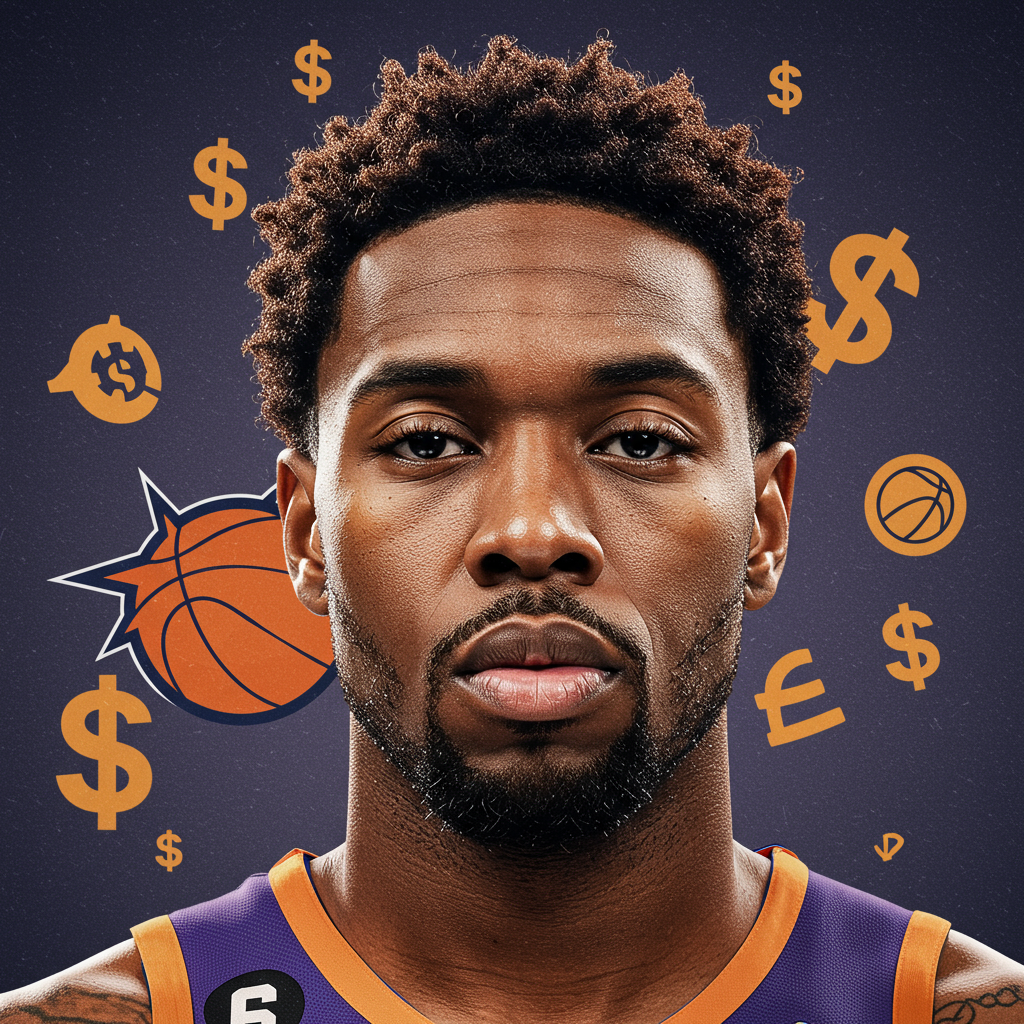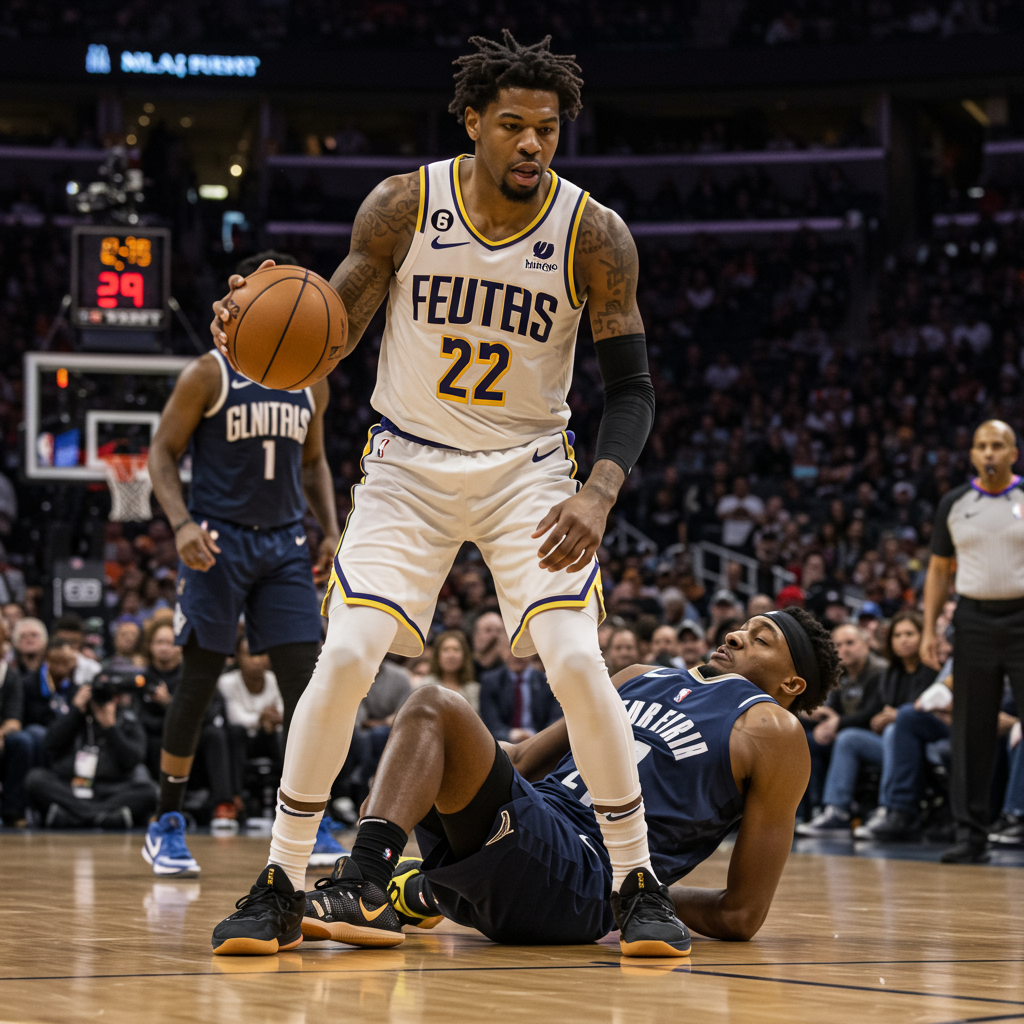The Phoenix Suns are reportedly moving closer to a significant financial maneuver. Sources indicate increasing optimism that the team and star guard Bradley Beal will agree to a contract buyout. This potential move would immediately make Beal an unrestricted free agent. It marks a possible end to the brief “Big Three” era in Phoenix.
Why the Suns Seek a Buyout
Phoenix’s primary motivation behind exploring a buyout is clear. They aim to drastically reduce their payroll. The goal is to get out of the NBA’s luxury tax. Ideally, they want to dip below the restrictive second apron. This threshold is set at $207.8 million for the 2025-26 season. Teams above the second apron face severe penalties and limitations. Escaping this level is a major priority for the Suns’ ownership.
How a Buyout Could Work
The proposed method involves several steps. First, the Suns would negotiate the buyout terms with Beal. Then, they would waive him. Crucially, they plan to use the stretch provision. This provision allows teams to spread a player’s remaining salary. For Beal, his remaining $110.8 million over two years could be spread over five years. This strategy would significantly lower his annual salary cap hit. The stretch period would run through the 2029-30 season.
The Contractual Hurdle
Executing this plan isn’t straightforward for Phoenix. A specific rule in the collective bargaining agreement presents a challenge. For the Suns to be eligible to stretch Beal’s contract, he must sacrifice a portion of his remaining salary. According to reports, Beal needs to give back at least $13.8 million of the $110.8 million owed to him. If he agrees to this giveback and the salary is stretched, the Suns would carry a “dead cap” hit. This dead cap hit would be approximately $19.4 million annually. It would remain on their books every season through 2029-30.
Beal’s Financial Dilemma
Finding a way to recoup that $13.8 million won’t be easy for Beal. Free agency opened recently. Most NBA teams lack significant cap space at this stage. Many have already used their major salary cap exceptions. These exceptions are often necessary to offer substantial contracts. A contract large enough to make up the $13.8 million would likely need to span at least two years. Few teams currently possess the financial flexibility to offer such a deal to Beal.
Potential Landing Spots and Constraints
Several teams have reportedly been on Beal’s radar. According to sources, these include the LA Clippers, Golden State Warriors, Los Angeles Lakers, and Milwaukee Bucks. However, each team faces unique financial limitations impacting their ability to sign him.
Clippers, Lakers, and Bucks Limitations
The Clippers recently completed a trade. They sent Norman Powell to Miami for John Collins from Utah. This deal opened a starting spot. It’s at Beal’s natural position. However, the Clippers already used their full $14.1 million Mid-Level Exception (MLE). They used it to sign center Brook Lopez. They only have the remainder of the MLE available. This limits their offer to Beal. They could offer a starting salary of roughly $5.3 million in 2025-26. The Lakers face similar constraints. They could potentially offer Beal the Biannual Exception. This exception is worth about $5.1 million in starting salary. The Milwaukee Bucks have already utilized their exceptions. They are reportedly limited to offering Beal a veteran minimum contract.
The Warriors’ Complex Situation
The Golden State Warriors present a different scenario. Their financial flexibility hinges on restricted free agent Jonathan Kuminga. Golden State is reportedly exploring a sign-and-trade for Kuminga. However, traction on such a deal has been slow. If the Warriors manage to trade Kuminga without taking back significant salary, they would gain access to the full $14.1 million MLE. This would allow them to offer Beal more money. Their potential offer would exceed what the Clippers, Lakers, or Bucks can provide. A report suggests Golden State views Beal as a better fit than Damian Lillard. They see Beal as more adaptable to their ball-handler-heavy system. However, resolving the Kuminga situation is a necessary prerequisite. This process could still take time.
Suns’ Other Financial Options
The buyout and stretch isn’t Phoenix’s only path to reducing payroll. They could waive Beal without stretching his salary. They could then trade another player, like Royce O’Neale. Trading a player without taking salary back would also lower their total payroll. Such a move might help them dip below the second apron threshold. However, sources indicate the Suns are primarily focused on saving luxury tax dollars. Alternative scenarios might not fully achieve this specific tax saving goal.
The Failed “Big Three” Experiment
The context for this potential departure is the disappointing performance of the Suns’ star-laden roster. Phoenix traded for Beal in the summer of 2023. The hope was he, Kevin Durant, and Devin Booker would form a dominant trio. This vision never fully materialized on the court. In their first season together (2023-24), the Suns won 49 games. They were then swept in the first round of the playoffs. The past season (2024-25) was even worse. The team finished 36-46. They missed the Play-In Tournament entirely. Kevin Durant was traded to the Houston Rockets earlier this summer. Now, Bradley Beal appears poised to be the next star player to leave Phoenix.
Frequently Asked Questions
Why are the Phoenix Suns reportedly pursuing a Bradley Beal buyout?
The Phoenix Suns are exploring a Bradley Beal buyout primarily for financial reasons. Their goal is to significantly reduce their total payroll. This would help them get out of the prohibitive NBA luxury tax. More importantly, they want to drop below the costly second apron threshold. This level carries severe penalties. A buyout and stretch provision would lower Beal’s annual cap hit for the team over several years.
Which NBA teams are potential destinations for Bradley Beal after a buyout?
Several teams are mentioned as potential landing spots for Bradley Beal. These include the LA Clippers, Golden State Warriors, Los Angeles Lakers, and Milwaukee Bucks. However, each team has financial constraints. The Clippers and Lakers can only offer limited exceptions. The Bucks are restricted to minimum contracts. The Warriors’ ability to make a competitive offer depends heavily on resolving their situation with restricted free agent Jonathan Kuminga.
How does the NBA’s collective bargaining agreement impact Bradley Beal’s potential buyout?
The collective bargaining agreement includes a specific rule affecting Beal’s potential buyout. For the Suns to utilize the stretch provision on his contract, Beal must agree to forfeit a portion of his remaining salary. Reports indicate this amount is at least $13.8 million. If he agrees, the Suns can waive him and spread his remaining salary over five years. This allows the team cap relief but creates a dead cap hit.
Conclusion
The potential Bradley Beal buyout signifies a critical turning point for the Phoenix Suns. It underscores their urgent need to address significant financial pressures, specifically escaping the luxury tax and second apron. For Beal, the situation presents a challenge; he must balance the financial sacrifice required for the buyout against the opportunity to become an unrestricted free agent and potentially join a contender, albeit likely on a less lucrative contract than his current deal. As NBA free agency progresses, all eyes will be on Phoenix and Beal as they navigate this complex situation, potentially reshuffling the league landscape.



